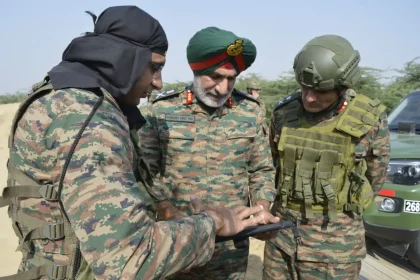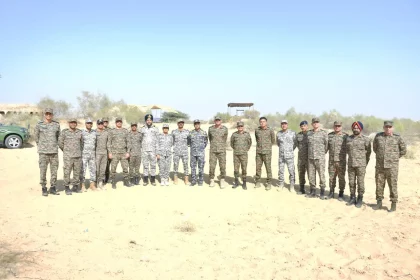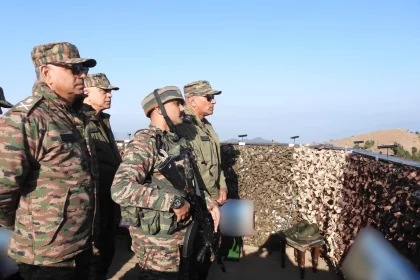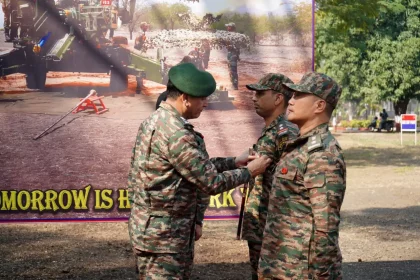All You Must Know About BvS10 ‘Sindhu’: India’s New All-Terrain Armoured Vehicle Built by L&T
A rugged, amphibious, all-terrain armoured vehicle custom-built for India’s toughest high-altitude and border operations.
Lt Gen Shamsher Singh Virk Validates Operational Training of Ranbankura Division
The visit reinforced Chetak Corps’ focus on operational excellence and mission readiness, underscoring its commitment to preparing future-ready formations capable…
GOC Rising Star Corps Reviews Operational Preparedness of Tiger Division
Army Commander praises professionalism and high readiness levels of frontline formation.
HDMC Officers Receive Operational Exposure During Forward Area Visit by Ranbankura Division
Orientation under Chetak Corps highlights preparedness, interoperability and training excellence.
Lt Gen Pratik Sharma Reviews Operational Readiness During Visit to Shahsitar, Poonch
Army Commander Northern Command commends troops for professionalism and high preparedness in challenging conditions.
Lt Gen Dhiraj Seth Reviews Tech-Enabled Training Initiatives at Artillery Centre Nashik
Southern Army Commander praises modernisation efforts and recognises achievers driving transformation in Gunner training.






